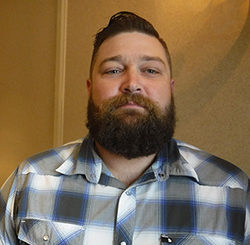 As we begin the New Year, it’s a good time to reflect on what we’ve accomplished and look at the direction we’re taking our promotional efforts for 2018. Let’s start with:
As we begin the New Year, it’s a good time to reflect on what we’ve accomplished and look at the direction we’re taking our promotional efforts for 2018. Let’s start with:
You lose some
It’s an expression. We didn’t really “lose” anything. It’s more of our reaching out and finding that our mandate isn’t compatible with the historical purpose of some target groups. Here are some examples:
Canadian Energy Pipeline Association (CEPA)
Our thinking in approaching this association was built on the thousands and thousands kilometres of pipelines going in every direction. Sure, large amounts of that infrastructure are below grade, but then again, much is above grade. There must be insulation on those sections, and with that we would have something to talk about.
We joined and attended two annual national conferences. The takeaway was this: CEPA’s focus is on government affairs, and environmental and Aboriginal issues, and not on energy conservation. We were also told that much of the below grade installations didn’t require insulation because the lines were placed below the frostline. Where insulation is a requirement, that responsibility lies with the pipeline owner.
It became a question of opening up doors with individual pipeline companies. Unfortunately, limited resources prevent TIAC from pursuing this path.
Canadian Energy Efficiency Alliance (CEEA)
TIAC was one of the charter members of this association. Our relationship looked positive, and initially it was to the extent that I was voted to the board of directors. Our interests dovetailed with CEEA’s in terms of developing beneficial tax- related legislation. Lobbying CRA proved to be more time consuming and costly than CEEA realized. There were other changes within CEEA resulting in CEEA’s decision to focus on energy efficiency in residential construction and transportation. Our needs no longer aligned with CEEA’s, and so we decided not to rejoin.
As a matter of interest, Jay Nordenstrom of NAIMA Canada is actively involved in CEEA representing the residential insulation side of the participating manufacturers, all of which are TIAC members.
Petrochem Industry
As much as we would like to be involved with this huge industry, the scope is beyond that for which we currently have resources. The Shells, Dows, and Imperial Oils of the world all have their individual approach to what and how insulation is installed in their respective global facilities. Specifications are very often site-specific and are generated in places as diverse as Calgary, Houston, London, and Holland.
On the plus side, some of our member manufacturers have done an excellent job of successfully gaining inroads into this world. These manufacturers, with their global reach, are well placed to promote their products and the mechanical insulation industry. We, as always, remain available should we be called upon to step in.
Mining Industry
Here again, we felt there were evident synergies. After all, the mining industry has smelters, remote locations, and challenging environmental conditions, and works with directives to reduce energy consumption and GHG emissions. This all looked tailor-made for what TIAC offers.
We had the TIAC booth at two tradeshows with one aimed at the entire industry and the second focused on mining engineering and maintenance. In connection with the second tradeshow, our participation also included a mechanical insulation presentation. Later on we were invited to present mechanical insulation at a technical webinar.
The result? Nothing! No interest. Where was the interest? It centered on self-driving Euclids, lubricants, Aboriginal, and environmental issues, etc. What we did find out was the insulation responsibility is in the hands of the consulting engineers. Look to SNC-Lavalin, Stantec, Hatch, etc. Once again, we don’t have the resources to develop a concentrated marketing effort focused on the engineering community.
Work in progress
Food & Beverage Industry
This category has become a challenge. We do know that every nickel saved is reflected in the cost of a can of peas, a hotdog, or a bottle of beer. We can’t seem to locate the part of this industry that should be dedicated to energy reductions. What is coming back is that each company undertakes an in-house approach to reducing costs. To cold-call on any of these companies would be a formidable task, so we’re leaving this category in sight, but on the back burner.
We continue to look for areas to investigate. TIAC has joined trade associations to increase our visibility. We go to their meetings, network, and hopefully generate interest.
You win some
We have, and in a big way. We have a great deal to be proud of as we move forward with the initiatives we put in place.
NECB-2015 and Provincial Energy Codes
TIAC’s involvement in developing upgrades to NECB-2015 is beginning to show results in lowering energy costs. Minimum pipe insulation thicknesses have been increased, in some cases, by as much as 50%. Added to this, NECB-2015 is impacting on how provincial energy codes are evolving. Mechanical engineers are picking up the changes. All of this is very positive, and will remain TIAC’s legacy contribution to energy conservation and to our industry.
Healthcare Industry & Secondary Institutions
We see a huge benefit to our industry as benchmarking becomes mandated throughout Canada. This benefit is in the form of HVAC retrofit work. The feedback we receive from numerous tradeshows is telling us we have a role to play, and that facilities managers welcome our involvement.
A few years ago, we brought in an incentive program designed to encourage TIAC member participation in our booth. Representatives from each of the sectors get to hear from attendees of the need for our involvement. We have demonstrated solutions of which a number of facility managers were unaware. All of the volunteers walk away with the complete contact list of the tradeshow delegates. Coming from the sales side of the business, I classify these as “hot leads” in the rare earth category.
We do need your help in the form of suggestions as to where we should go next. If anyone has contacts in areas we haven’t been able to gain a toehold, please take us along. Promoting our industry is a collaborative effort that can only succeed with every member’s involvement.


